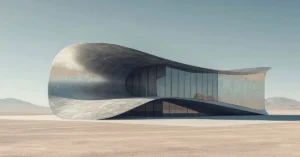In the fast-paced digital age, technology has become an integral part of almost every industry, and architecture is no exception. From the earliest stages of design to the construction process and beyond, technology has revolutionized the way architects approach their work. In this blog, we will delve into the transformative impact of technology on the business of architecture, exploring the advancements that have reshaped the industry and the opportunities they bring.

The Transformative Influence of Technology on the Business of Architecture
- Virtual Design Tools: Opening Doors to Imagination
One of the most significant advancements in architectural technology is the emergence of virtual design tools. With the aid of computer-aided design (CAD) software and 3D modeling programs, architects can now create virtual representations of their designs. These tools allow for more accurate visualization, enabling clients to better understand and experience architectural concepts before construction begins.
- Embracing Virtual Reality for Enhanced Design Experience
Virtual reality (VR) technology has taken architectural design to new heights. By immersing clients and architects in interactive virtual environments, VR allows for a more immersive and realistic experience. Designers can now walk clients through a digital representation of their future spaces, making adjustments and modifications in real-time. This technology not only enhances the design process but also improves client satisfaction and reduces costly revisions.
- Building Information Modeling (BIM): Streamlining Collaboration and Efficiency
Building Information Modeling (BIM) has transformed the way architects, engineers, and contractors collaborate and manage projects. BIM software allows for the creation of detailed 3D models that integrate architectural, structural, and MEP (mechanical, electrical, plumbing) systems. This collaborative platform enhances communication, reduces errors, and streamlines the construction process, resulting in greater efficiency and cost savings.
- Sustainable Innovations: A Greener Future
Architecture plays a crucial role in addressing the global environmental crisis, and technology has facilitated significant advancements in sustainable design. From energy-efficient building materials to smart systems that monitor and optimize energy consumption, architects can now integrate sustainability seamlessly into their projects. Green technologies like solar panels, rainwater harvesting systems, and passive design strategies have become more accessible, creating a more sustainable built environment.
- Automation and Artificial Intelligence: Aiding Design and Analysis
Automation and artificial intelligence (AI) have simplified repetitive tasks and enabled architects to focus more on creative design processes. AI algorithms can analyze vast amounts of data and generate design options based on specific criteria. This technology aids architects in optimizing building performance, energy efficiency, and even structural integrity. By automating tedious tasks, architects can devote more time to innovative thinking and problem-solving.
- Collaborative Design Platforms: Bridging Distances
Technology has transcended geographical limitations by enabling architects to collaborate remotely. Cloud-based platforms and real-time communication tools facilitate seamless collaboration between architects, clients, and project stakeholders. This virtual workspace allows for efficient coordination, regardless of physical location, unlocking new possibilities for global design teams and expanding the reach of architectural firms.
Conclusion
The impact of technology on the business of architecture is undeniable. Virtual design tools, virtual reality, BIM, sustainable innovations, automation, and collaborative platforms have revolutionized the way architects work. These advancements have not only enhanced the design process but also improved efficiency, cost-effectiveness, and sustainability. Architects and firms that embrace these technologies are poised to thrive in the future, offering innovative solutions and pushing the boundaries of architectural possibilities.
By harnessing the power of technology, the architecture industry is shaping a future where creativity and functionality go hand in hand, delivering remarkable structures that harmonize with the environment and cater to the evolving needs of society.
For more SketchUp tutorials you can check out https://www.sketchupguru.com/blog/
You can also check more tutorial videos for sketchup on our YouTube Channel,
https://www.youtube.com/c/SketchupGuru
To know about the Top Online 3D Rendering Courses for 2022 click,













